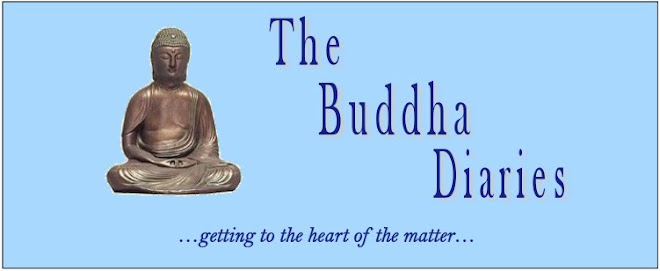 |
| Portrait of Caravaggio by Ottavio Leoni |
Michelangelo Merisi, named Caravaggio after the town of his
origin, was born into the very real darkness of the plague-ridden city of Milan in
1671. In his earliest years he
lost almost every male member of his family, including his father, and was
brought up in the a=shadow of poverty, sickness and death. It's hardly surprising, then, that he was much influenced by the
new wave of socially-conscious Catholicism that followed in the tradition of
St. Francis of Assisi. In a
pattern that was to be repeated at intervals throughout his life, he was forced
as a young man to flee Milan as a fugitive from the law, and took up residence
in Rome where he soon found patronage and established a reputation for creative
genius as well as for his scandalous, even criminal personal behavior. His apprenticeship as an artist had been so
inferior and conventional, in Graham-Dixon’s
telling, that much of his pioneering talent was self-taught, acquired in the studio and by the challenge he found in masters like his namesake Michelangelo. He never learned the traditional art of fresco, nor did he
plot out his canvases with preparatory drawing, preferring instead to work
spontaneously with paint.
In Rome, the artist’s life narrative goes, he was regularly
seen in the unsavory company of whores, pimps, drunkards and petty
criminals. (This book disputes
earlier presumptions of Caravaggio’s homosexuality; more than likely, it suggests, he was
equally promiscuous with both sexes.)
Triggered easily to violent response by presumed affronts to his dignity as a man or artist, he prowled the
seedier districts of the city at night armed with sword and dagger, dressed all
in black, always ready for a brawl. Lacking other written historical records, Graham-Dixon
diligently trolls contemporaneous court records for details of an unruly lifestyle
that led to the artist’s renewed flight from justice, following an illegal duel
that resulted in the death of his opponent. Next stop, the teeming, iniquitous backstreets of Naples;
then, after more troubles, the island fortress of Malta, where he managed to
parlay his talent as a painter into a hospitaller knighthood, only to be stripped of the honor weeks
later for having defied the rules of the ancient Order of St. John. Disgraced, and pursued by insulted fellow knights bent on revenge, he fled to Sicily, where the last of his great paintings were
made. He died, still not yet forty
and still on the lam, in a last attempt to secure a pardon and return to Rome. His death was caused in part as a result of wounds received in a revenge attack by unknown
assailants. (Studies of more recent bone fragment discoveries, claimed to be those of Caravaggio, suggest that lead poisoning from oil-based paints could have been a contributing factor; and could also have been the cause, as with Van Gogh, of a debilitating mental instability at the root of his eccentric behavior.)
It’s an extraordinary story, filled with intrigue and dramatic twists and turns. I'll admit that I found myself bogged down, at times, by the sheer amount of meticulous research
into the competing families and clans in early 17th century Italy,
but Graham-Dixon’s evocations of the palaces and churches, the taverns and the often dangerous city streets proved compelling enough to keep me thoroughly
engaged, informed and entertained. He’s at
once inventive and persuasive, too, in his portrayal of the characters
involved, from courtesans to countesses, from church dignitaries to noble patrons of
the arts and denizens of those treacherous back alleys. He paints a colorful and
lively picture of an eventful historical period, when Inquisition Spain ruled Italy and Catholicism struggled to preserve its temporal and spiritual power against the spread of Protestant theology to the north.
I’m personally less convinced by some aspects of Graham-Dixon's interpretation of the paintings, almost all of which he examines with an expert
eye and with fine attention to the detail of both style and narrative
content. But he projects
into them a great deal more religious fervor and significance that I think is
warranted. I tend to agree with
his assessment that “Whatever [Caravaggio] set out to paint—the death of a
martyr, the infancy of Christ or his resurrection—he always ended up painting
himself.” The earthiness, the
explicit, often sultry, ultimately fleshly sexuality, the bloody violence, the reality of poverty
and degradation—down to the grubby feet and dirt under the fingernails—all
these seem to me very much an expression of the “profane” reality of the
artist’s lived experience. The
paintings’ sometimes thuggish, sometimes cutthroat melodrama echoes the
recurrent melodrama of his life.
And that “sacred” glow, those “lightning flashes” that highlight moments
of ecstatic revelation read, to this one viewer, more like aspiration than
belief, more hope than faith.
These disagreements aside, Caravaggio: A Life Sacred and Profane remains a first class read. I could have wished for larger reproductions than the ones squeezed in between the text--but then there is always the Internet, a click away, with ready access to fine images and detail. You'll find an excellent slideshow here.
These disagreements aside, Caravaggio: A Life Sacred and Profane remains a first class read. I could have wished for larger reproductions than the ones squeezed in between the text--but then there is always the Internet, a click away, with ready access to fine images and detail. You'll find an excellent slideshow here.


No comments:
Post a Comment